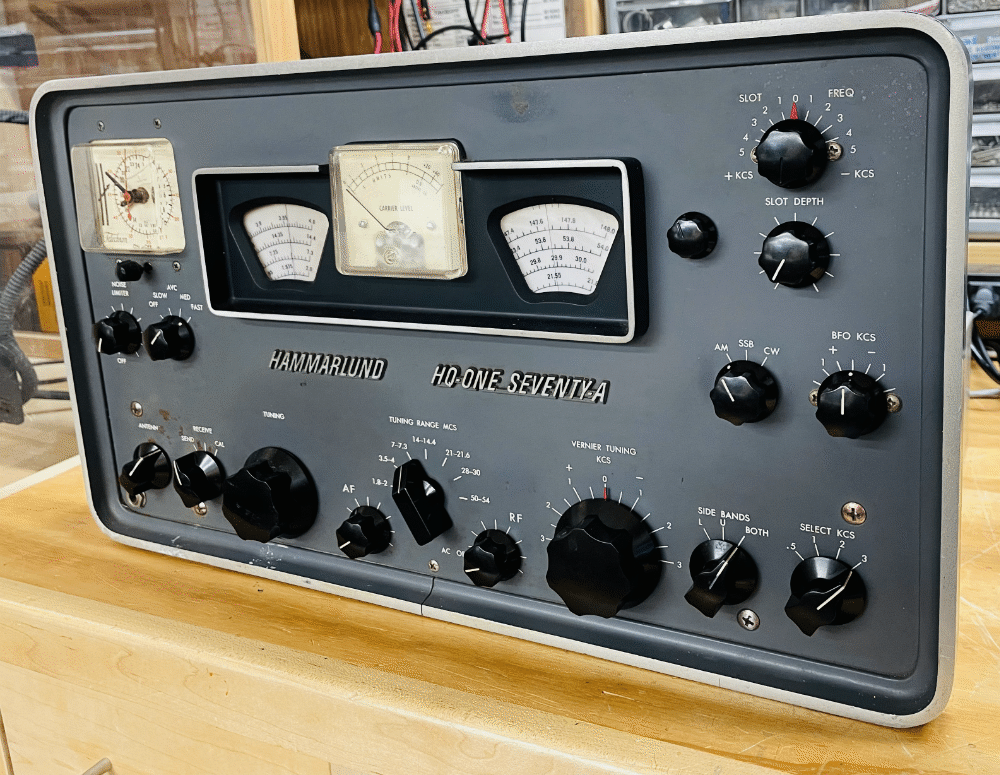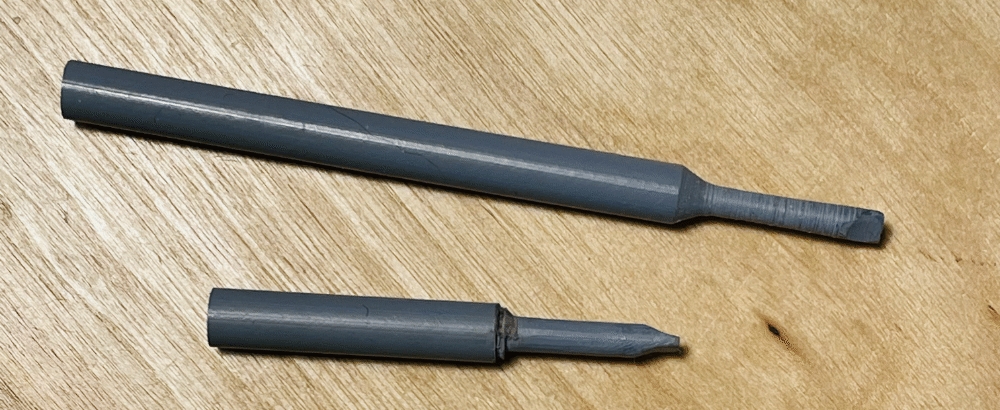Hammarlund HQ-170A

The Hammarlund HQ-170A is a ham-band only receiver. It was one of the most sought after receivers in the early 1060s. New cost was $369. I came across this one at the NJ Antique Radio Club swapmeet in November 2022. I was told it might work but probably needed work. Couldn't resist.
I replaced the multi filter can cap with one from Hayseed Hamfest. They make a very nice multi can that replaces the original.
I also replaced the line cord with a three-wire and put a fuse in line with the hot lead. Replaced a couple of other paper caps and set about alignment. I had no trouble with the 60KHZ adjustments but the 455KHZ gave me a fit. I could not get the VTVM to respond to the adjustments and (my own fault), screwed up these settings pretty badly. I guess I am pretty thick, but it took awhile to figure out that the three 455KHZ slugs were not hex but were screwdrive like slots. I made my own tools from some 1/4" delran that I improvised turning on my milling machine (I don't have a lathe) to narrow the diameter to fit through the transformer hole, then filed the tips into a spade. They worked well.
 After much time and effort I managed to get a faint 7200KHZ signal using a signal generator through the antenna jack. I adjusted the T3, T4 and T5 for the strongest signal. I'm still not clear about my problem with the VTVM signal because there was no problem with the 60KHZ or the RF/oscillator alignment on pin 2 of V13 (12AU7).
After much time and effort I managed to get a faint 7200KHZ signal using a signal generator through the antenna jack. I adjusted the T3, T4 and T5 for the strongest signal. I'm still not clear about my problem with the VTVM signal because there was no problem with the 60KHZ or the RF/oscillator alignment on pin 2 of V13 (12AU7).
When I tried to troubleshoot some of the problems I was having with the receiver and wanted to understand how the mute function worked, I was confused with the factory schematic. So I set about redrawing the circuit making the B+ and grounds easier for me to understand, and it helped. Click on the diagram for a hires jped.

Trying to leaf through several pages of diagrams and instructions when aligning the IF stages was a bother. Some of the transformers were quite a bit out of alignment, and I needed to inject a signal at different stages, so I needed to identify tubes and other components, so having the tube function was necessary for what I was trying to do. Here is my solution, although I know some of the text is small. Click on the image below to get a higher res jpeg for printiing.

I found several websites to be helpful for the alignment procedure:
-
K7PP has a terrific series of 5 YouTube videos on the HQ-170-A
- Receiver Repair Part1
- Filter capacitor replacement (Part II)
- Low IF Alignment Part III
- RF front end alignment Part IV
- First Oscillator alignment Part V